FAQS
What are Tokyo turnips?
- Tokyo turnips are a newer variety of classic turnips.
- They were cultivated in Japan in the 1950s.
- It’s also known as the Hakurei, Kabu, and salad turnip.
- They are cold-weather root vegetables that are grown in both the Spring and Fall months.
- It’s a root vegetable in the Brassica Rapa species and other plants such as mustard greens, wild and field mustards, kale, and wild turnips.
- Tokyo turnips have a small globe-like white base with light green straight tendrils and leaves.
- When the plants go to seed, they have bright yellow flowers attracting the bees.
How are they different from other turnips?
- Classic turnips are larger than Tokyo Turnips with a white base that generally ranges from 2-8 inches, and often have a yellow, purple, or green at the top of the globe where the sun hits as it grows in the ground.
- These larger turnips also have a white globe-like base, green stem, and leaves.
- The significant differences between the two varieties are:
- Tokyo turnips are smaller, sweeter, and have extremely thin skin that you don’t have to scrub or peel. They also can be eaten raw.
- Other turnips are larger, have a tough and thicker outer skin that is often removed before consumption, and are not recommended to eat raw.
- Both varieties contain the globe-like base and the stem and leaves that are all edible and can be cooked in many ways.
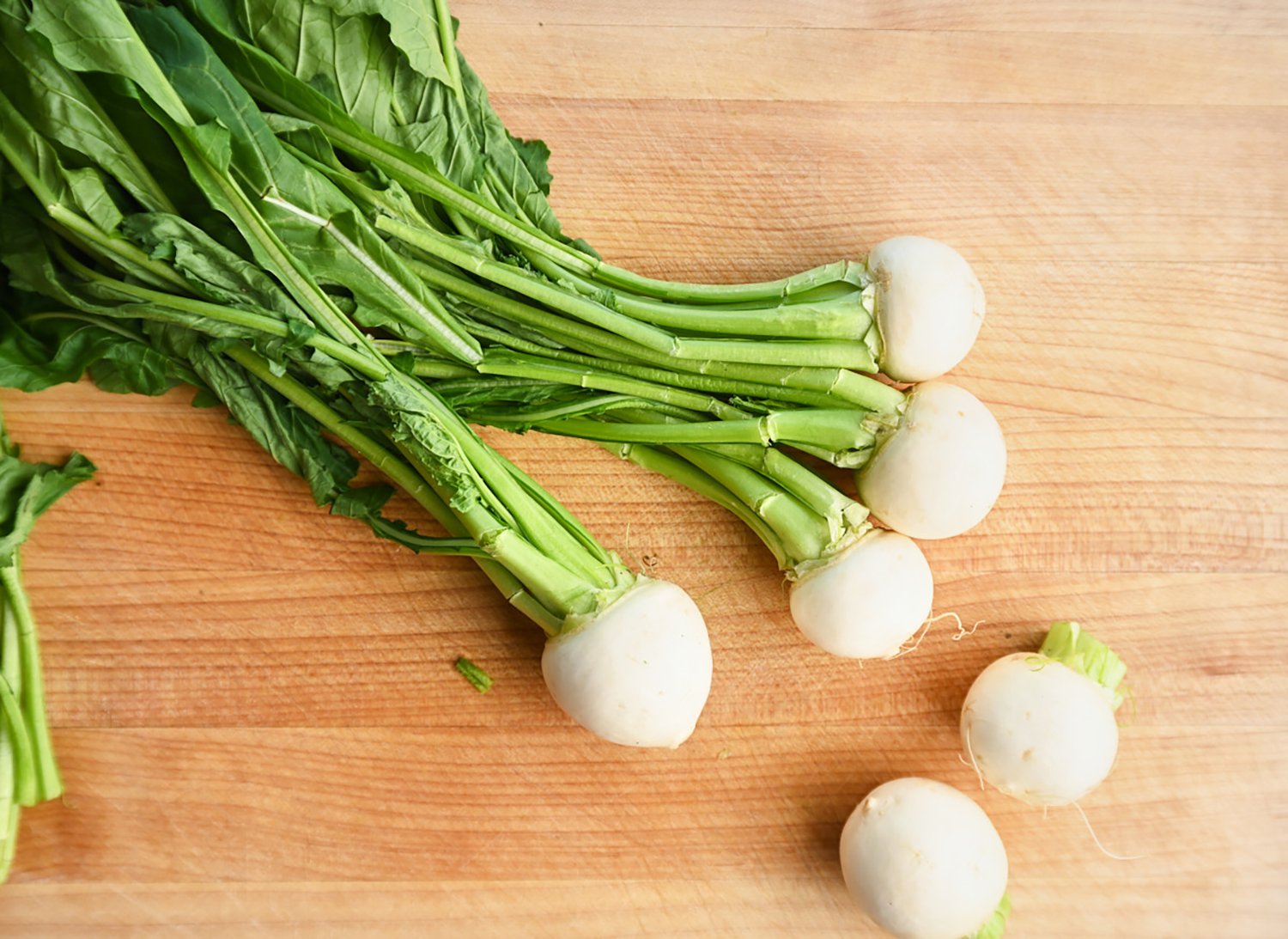
What do Tokyo turnips taste like?
- The white globe-like base of the Tokyo turnip has a sweet and smooth buttery flavor. It almost tastes slightly fruity and delicate when cooked.
- The greens taste very similar to mustard greens. They are slightly bitter and have a slightly sharp peppery bite. The bitterness lessens in the cooking process.
Where do Tokyo turnips originate?
- Wild turnips were found as early as 2,000 BC in Asia and Europe. These turnips were not for consumption, and later edible turnips were first cultivated in Europe and spread to China and Japan by 700 AD.
- Turnips became popular because they grow quickly from seed to greens to bulb within a few weeks.
- In the 16th century, they were considered a noble vegetable and were on the coat of arms for many royal and prominent families.
- In Celtic times, they were carved out like pumpkins and used as lanterns.
- They were essential throughout history because of the quick harvesting time and became a staple food throughout periods such as the antebellum days and the famine during WWII.
- Throughout history, the smaller and more tender turnips have been grown for human consumption, and the larger varieties are used to feed livestock.
- In England, Scotland, Ireland, Quebec, Manitoba, and a few other locations, turnips are referred to as Rutabaga. This vegetable in America is classified as having a more yellow root and taste but is in the same family.
What do turnips look like when growing in the ground?
- After you plant turnips from seed, the greens will sprout with a thin stem and leafy greens, and the bulb will become swollen.
- The greens should be harvested, and the bulb tastes sweeter when harvested younger and are ready to pick from the ground in around five to ten weeks.
Where does the word turnip come from?
- The word turnip comes from the would turn, which means rounded, and neep, Latin for Napus, meaning plant.
When do Tokyo Turnips come into season?
- Turnips grow best in the Spring and Fall.
How to grow Tokyo Turnips
- For the Spring harvest, the seeds are ready to sow around two-three weeks before the last Spring frost.
- But for a Fall harvest, you should plant the seeds in the late summer.
- If you want a later Fall harvest, you can plant the seeds in early fall.
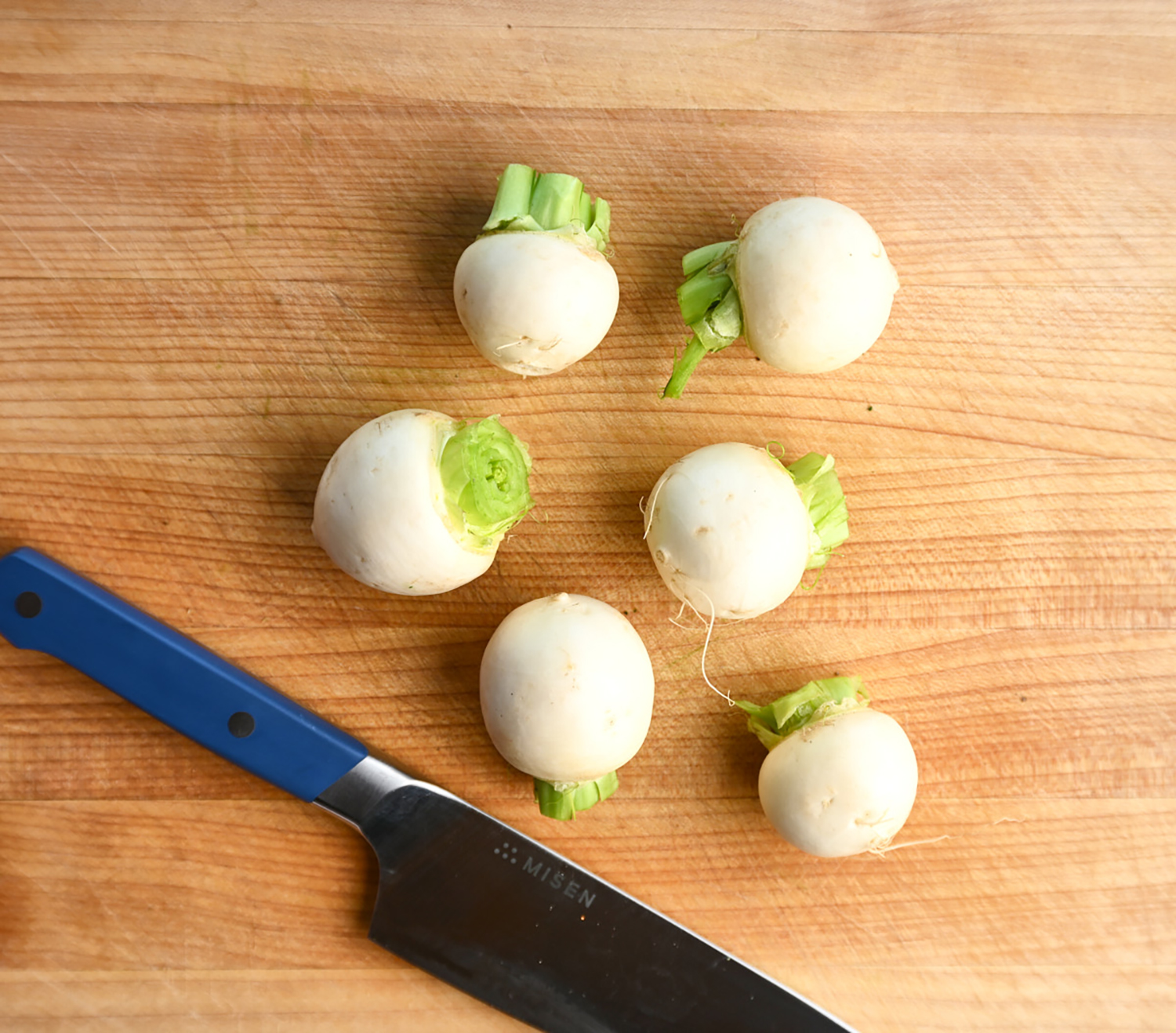
When are Tokyo turnips ready to pick?
- Turnips should be ready to harvest around five to ten weeks from sowing the seeds.
What are the nutritional factors of Tokyo turnips?
- Tokyo turnips are super healthy for you as they contain a fantastic amount of antioxidants and vitamins.
- The greens and the bulb are packed with a wonderfully dense amount of nutrients.
- Tokyo turnips contain:
- Vitamin C: This vitamin acts like an antioxidant that helps build your body’s overall immunity by helping to develop strengthening proteins and collagen, promoting iron absorption, and repairing and growing necessary tissue.
- Vitamin K: This vitamin helps promote bone growth and aids in blood coagulation (which is essential to stop wounds from excessively bleeding).
- Vitamin A: It is wonderful to support the immune system, growth, and reproduction and aids in the functionality of your lungs, heart, and other organs.
- Calcium: Helps to promote strong and healthy bones.
- Folate: This vitamin helps produce healthy white and red blood cells that produce DNA and RNA.
Can you eat Tokyo turnips raw?
- Yes, the bulb of the Tokyo turnip is one of the only turnips varieties you can eat raw.
- However, they contain a natural chemical compound known as Cyanogenic glycosides that expel hydrogen cyanide when consumed.
- This is an extremely LOW LEVEL, but some people find that this can cause them to feel dizzy, give them a headache, make them feel weak, or sometimes increase their heart rate.
- This chemical is dramatically reduced and practically at zero when the turnips are cooked, pickled, or dried.
Why are Tokyo Turnip greens bitter?
- The greens have a naturally bitter and spicy taste. However, the bitterness can be reduced by braising, sauteing, or blanching the greens.
Generally, how long do Tokyo turnips last in the refrigerator?
- Tokyo Turnips last around five to eight days in the refrigerator.
How do you cook Tokyo turnips?
- The best way to cook Tokyo Turnips is to cut the bulb from the greens and cook them separately. This is done because the greens cook much faster than the bulb.
- I love the bulb cut in half and sautéed with some garlic and oil.
- The greens are wonderfully sautéed or braised.
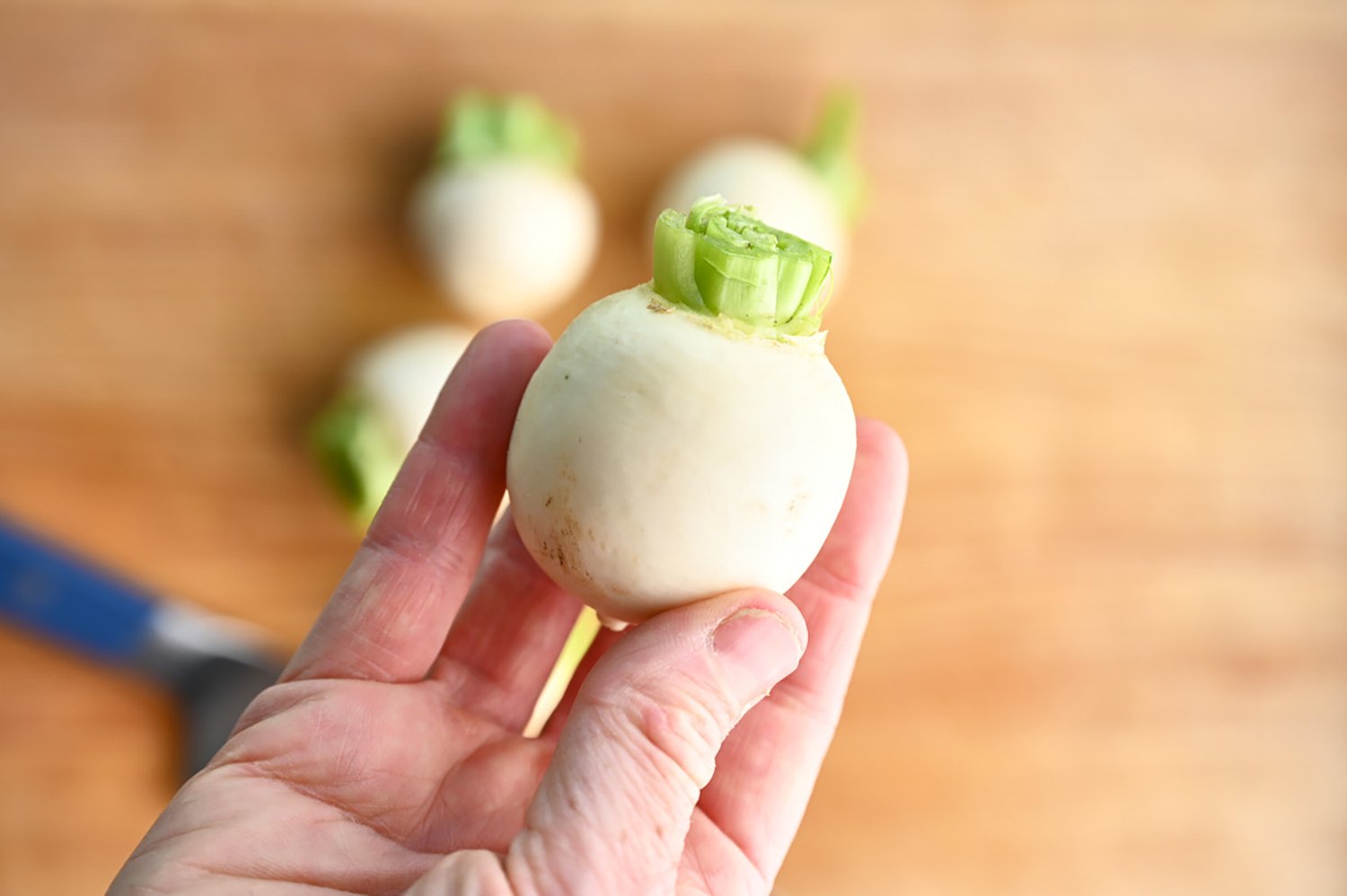
Tips and tricks for cooking success
- The key to properly cooking the bulb is not to overcook it. Mushy turnips are not appealing!
- Eating raw:
- Thinly slice the vegetable and treat it like you would a thinly sliced cabbage. Add oils, vinegar, and a sweet component, and make a salad or coleslaw.
- Blanching:
- You want to cook these bulbs until they are tender but hold a solid crunch. After taking the turnips out of the boiling water, you want to immediately submerge them in an ice bath or run them under cold water to stop the cooking process.
- Sautéing:
- I like to blanch my turnip bulbs first to help tenderize them and then saute them with garlic and spices. I add them to a smoking hot pan with oil, brown them to make them extra crispy, and then add some garlic.
- Steaming:
- Make sure you add salt to your water, and don’t allow the turnips to overcook. Remove them from the steam when tender, but still hold a nice, structured body.
- Roasting:
- Make sure to coat the vegetable with oil and salt. The oil will help create a nice glaze on the turnips to give them a crispy exterior, while the salt will bring out their natural sweetness and help cook them from the inside out. Again, take them out of the oven while they still have a crunch before they turn completely soft.
- Pickling:
- Make sure you separate the bulb from the greens and pickle them separately. A pickled turnip will taste similar to a cocktail onion but will have a little more crunch. They make a fantastic garnish for a bloody mary!
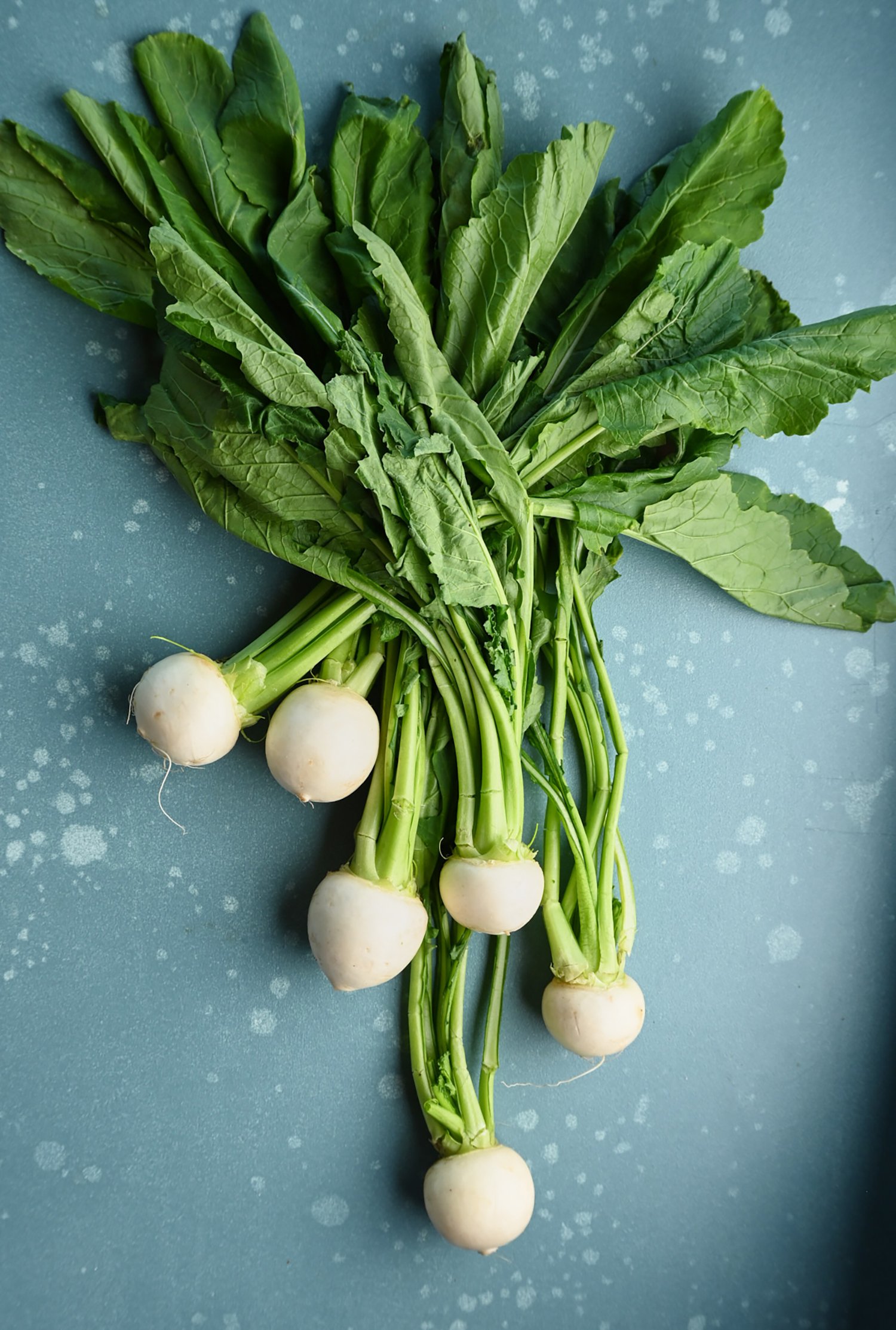
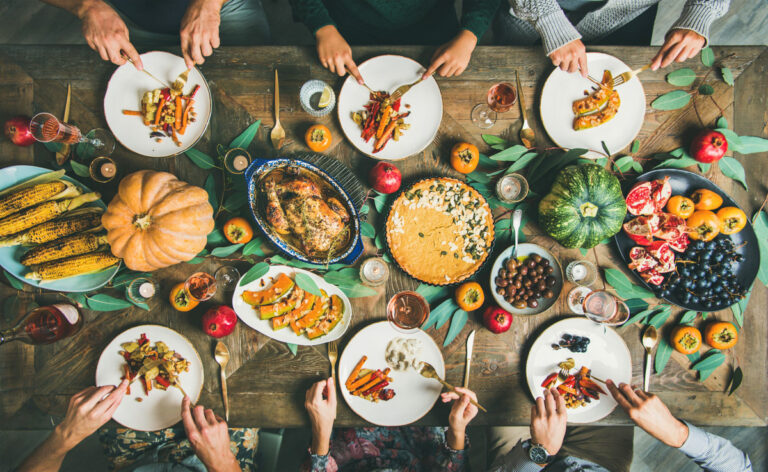
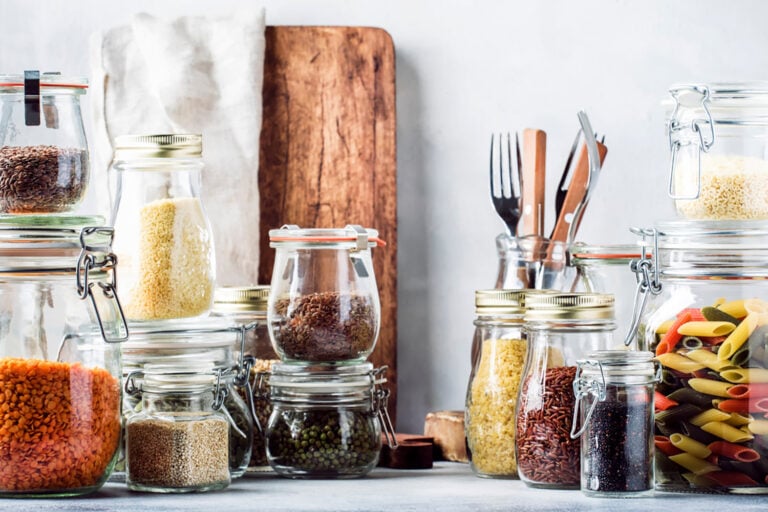



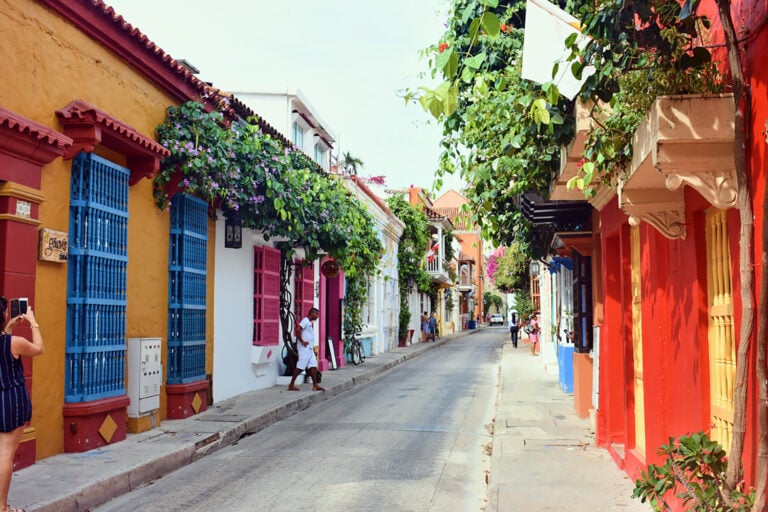
I’ve recently started a web site, the information you offer on this website has helped me greatly. Thanks for all of your time & work.
Leave a comment